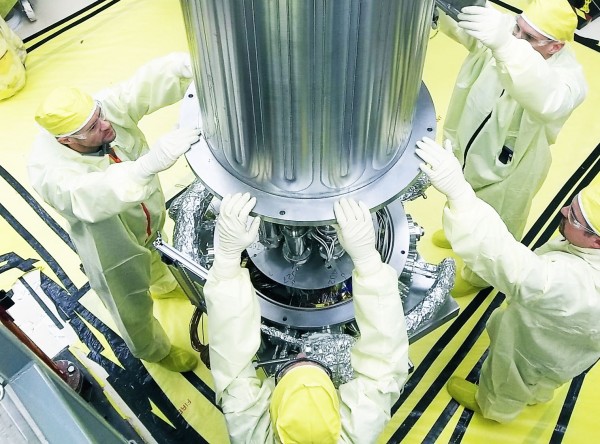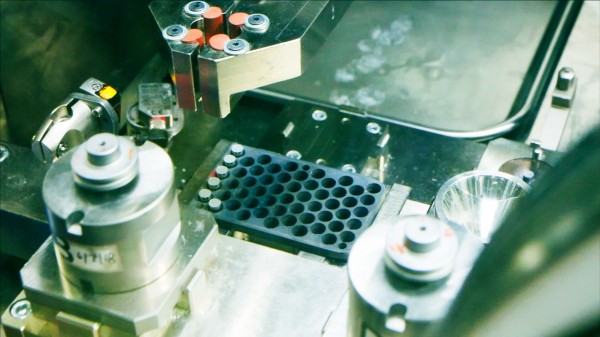Nuclear power has powered rockets for decades, but reaching deep space will require a big leap.
Last year, Voyager 2 finally broke through into interstellar space after traveling more than 11.2 billion miles. This epic mission was made possible by nuclear power, the technology that has powered spacecraft for decades.
Spacecraft like the Voyager pair are powered with radioisotope thermoelectric generators,
or RTGs. These engines rely on the fact that radioactive substances
release heat as they break down. By converting the heat generated by the
decay of plutonium-238 (P-238) into electricity, spacecraft keep going
long after the sun’s rays are a distant glimmer.
But RTGs are also constraining us. If we want to send spacecraft—or humans—farther, faster, and more often, we can’t keep relying on the same decades-old nuclear technologies. How can we expand our reach?
But RTGs are also constraining us. If we want to send spacecraft—or humans—farther, faster, and more often, we can’t keep relying on the same decades-old nuclear technologies. How can we expand our reach?
What’s happening right now
Our supply of plutonium-238 is running dry.
The original batch was made in the US as a by-product of creating
weapons-grade plutonium-239 during the Cold War. To keep exploring, NASA
needs a lot more.
Oak Ridge National Lab took on the task of manufacturing it in
2012. It was a slow manual process to make even a few grams. But last
month, researchers at Oak Ridge announced they’d
finally developed a way to automate and scale up the production of
neptunium and aluminum pellets needed to make P-238. The pellets are
transformed into precious P-238 by pressing and enclosing them in
aluminum tubing and irradiating them in a reactor.
The lab now makes 50 grams of P-238 a year but expects to be up to
400 grams a year soon. It predicts it will be able to hit NASA’s annual
target of 1.5 kg within two years. The more P-238 we have, the more
missions we can send to deep space.
Small steps
NASA has also investigated making more efficient RTGs called
eMMRTGs, or enhanced multi-mission RTGs. But to really take a bigger
step forward, we have to look at something new. “Eventually we will need
higher-power systems. Only fission can supply that in any type of
near-term scenario,” says Los Alamos National Laboratory researcher
David Poston.

NASA
Poston is the chief reactor designer for Kilopower, a prototype fission reactor that NASA successfully testedlast
year. It could provide power over the course of long missions, possibly
even for human planetary outposts. “The way we evolved it to being
feasible was simplifying things,” says Poston. “We’ve had plenty of
space reactor programs over the past 30 years, but they’ve all failed.
Mostly because they became too expensive.” Kilopower currently has an
output of 4 kilowatts, but researchers hope to reach 10 kW.
Giant leaps
There have been some pie-in-the-sky nuclear ideas for a while,
including detonating atom bombs out the back of spacecraft in what’s
called nuclear pulse propulsion (you
might be able to spot a few practical problems with that one). But some
people are still working on making some equally crazy ideas a reality.
One of those teams is at Princeton Satellite Systems, which is
looking to generate megawatts of power using fusion. Yes, we have gone
from watts to kilowatts to megawatts. You’re probably familiar with
fusion—it happens in the sky every day courtesy of our sun. Fusion
produces several times the amount of energy fission creates, but it is
hard to control.
Princeton Satellite Systems is developing a direct fusion drive,which
uses magnetic fields to generate current in plasma and heat it up to 1
billion °C. The team says the thrust the minivan-size machine would
(theoretically) produce would cut inter-solar-system travel times by
more than half (trips to Pluto would take about four years rather than
nine), with power to spare.

Oak Ridge National Laboratory, U.S. Dept. of Energy
“If you have power when you get there, you can do a lot of really
cool experiments,” says the firm’s physicist Charles Swanson. “One of
the coolest things Cassini did is radar images of Saturn’s moon
Titan. But radar is power hungry and was limited. Having a megawatt of
power frees up options.”
The company has received a boatload of funding from NASA and the US
Department of Energy, so it looks as if someone believes this moonshot
could work. But let’s be frank: it isn’t going to happen anytime soon—or
even in our lifetime. Fusion is still in the earliest stages of
research here on Earth.
Even so, it’s still fun to imagine what it might make possible. It could be the leap we need to fast-track our trips to the outer planets and beyond.
